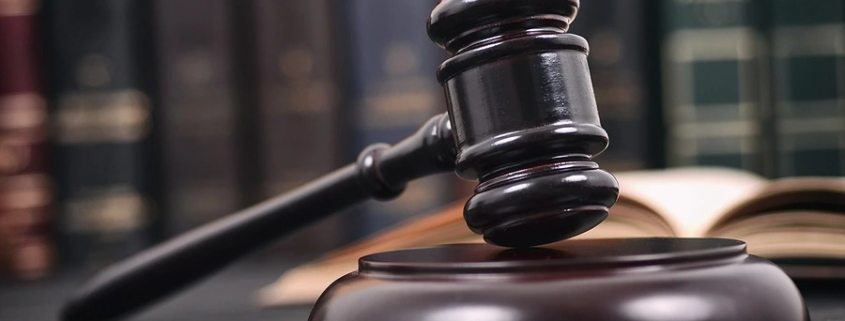How to Prove Liability in a Personal Injury Case in Pennsylvania
When someone suffers an injury because of another party’s negligence, proving fault is crucial to recovering compensation. Pennsylvania law requires injured individuals to demonstrate that someone else’s careless or reckless actions led to their harm. While this may sound straightforward, establishing liability often involves gathering evidence, understanding legal standards, and navigating complex insurance and court procedures.
Key Elements of a Personal Injury Claim
In Pennsylvania, personal injury cases rely on proving four essential elements:
- Duty of Care – The responsible party must have owed the injured person a duty to act reasonably. For example, drivers must follow traffic laws, and property owners must maintain safe conditions.
- Breach of Duty – The injured person must show that the at-fault party failed to meet this duty. This could involve reckless driving, ignoring safety rules, or failing to fix hazardous conditions.
- Causation – There must be a direct connection between the breach of duty and the injury. If a driver runs a red light and hits a pedestrian, the act of running the red light caused the harm.
- Damages – The injury must have resulted in measurable losses, such as medical bills, lost income, or pain and suffering.
Each of these elements must be supported by strong evidence to build a successful claim.
Gathering Evidence to Support Your Case
The strength of a personal injury claim depends on the quality of evidence. Different types of proof can help establish fault and the extent of damages:
- Accident Reports – Police reports, workplace incident records, or property owner documentation can provide an official account of what happened.
- Medical Records – Detailed medical documentation connects the injury to the accident and supports claims for compensation.
- Photographic and Video Evidence – Pictures or videos from the scene can demonstrate hazardous conditions, vehicle damage, or visible injuries.
- Witness Statements – Testimony from bystanders or experts can reinforce your version of events.
- Expert Analysis – Professionals such as accident reconstruction specialists can clarify how the incident occurred and who was responsible.
The more evidence available, the stronger the claim will be when negotiating with insurers or presenting the case in court.
Understanding Pennsylvania’s Comparative Negligence Rule
Pennsylvania follows a modified comparative negligence system. This means that if an injured party is partially at fault, their compensation may be reduced by their percentage of responsibility. However, they can still recover damages as long as they are not more than 50% at fault.
For instance, if someone is deemed 20% at fault for an accident and incurs $100,000 in damages, their compensation would be reduced by 20%, resulting in a payout of $80,000. However, if they are found to be 51% or more at fault, they would be ineligible for compensation.
Insurance companies frequently attempt to assign partial blame to minimize payouts. Consulting an experienced attorney can help contest unfair fault determinations and safeguard the injured party’s right to fair compensation.
Common Defenses Used by At-Fault Parties
Those accused of negligence may use various defenses to avoid liability. Some common strategies include:
- Claiming the Injured Party Was at Fault – The defense may argue that the injured person contributed to the accident.
- Disputing the Severity of Injuries – Insurance companies often claim that an injury was pre-existing or exaggerated.
- Asserting Assumption of Risk – In cases like sports injuries or hazardous activities, defendants may argue that the injured person knowingly took the risk.
- Lack of Causation – The defense may try to prove that another factor, such as a prior medical condition, caused the injury.
Understanding these tactics and having strong legal representation can help counter these arguments effectively.
The Role of a Personal Injury Attorney
Proving fault in a personal injury case requires legal knowledge and strategic planning. A skilled attorney can assist by:
- Investigating the accident and gathering evidence
- Negotiating with insurance companies to secure a fair settlement
- Consulting with medical professionals and expert witnesses
- Representing the injured person in court if a fair agreement cannot be reached
An attorney ensures that legal deadlines are met and that the injured party’s rights are protected throughout the process.
Steps to Take After an Injury in Pennsylvania
If you have been injured due to someone else’s negligence, taking the right steps can strengthen your claim:
- Seek Medical Attention – Immediate treatment not only protects your health but also creates a record of your injuries.
- Report the Incident – Notify the police, property owner, or employer as appropriate.
- Document Everything – Take photos, get witness information, and keep copies of medical and accident reports.
- Avoid Discussing Fault – Do not admit blame or speculate about the cause of the accident.
- Consult an Attorney – A legal professional can guide you on the best course of action and handle negotiations.
Conclusion
Proving liability in a personal injury case requires careful documentation, strong evidence, and a deep understanding of Pennsylvania law. Insurance companies and at-fault parties often fight to minimize payouts, making it essential to have experienced legal support. At Kingbird Legal, we are committed to helping injured individuals recover the compensation they deserve. If you or a loved one has been hurt due to someone else’s negligence, contact our team today for a free consultation. Let us fight for your rights while you focus on healing.




